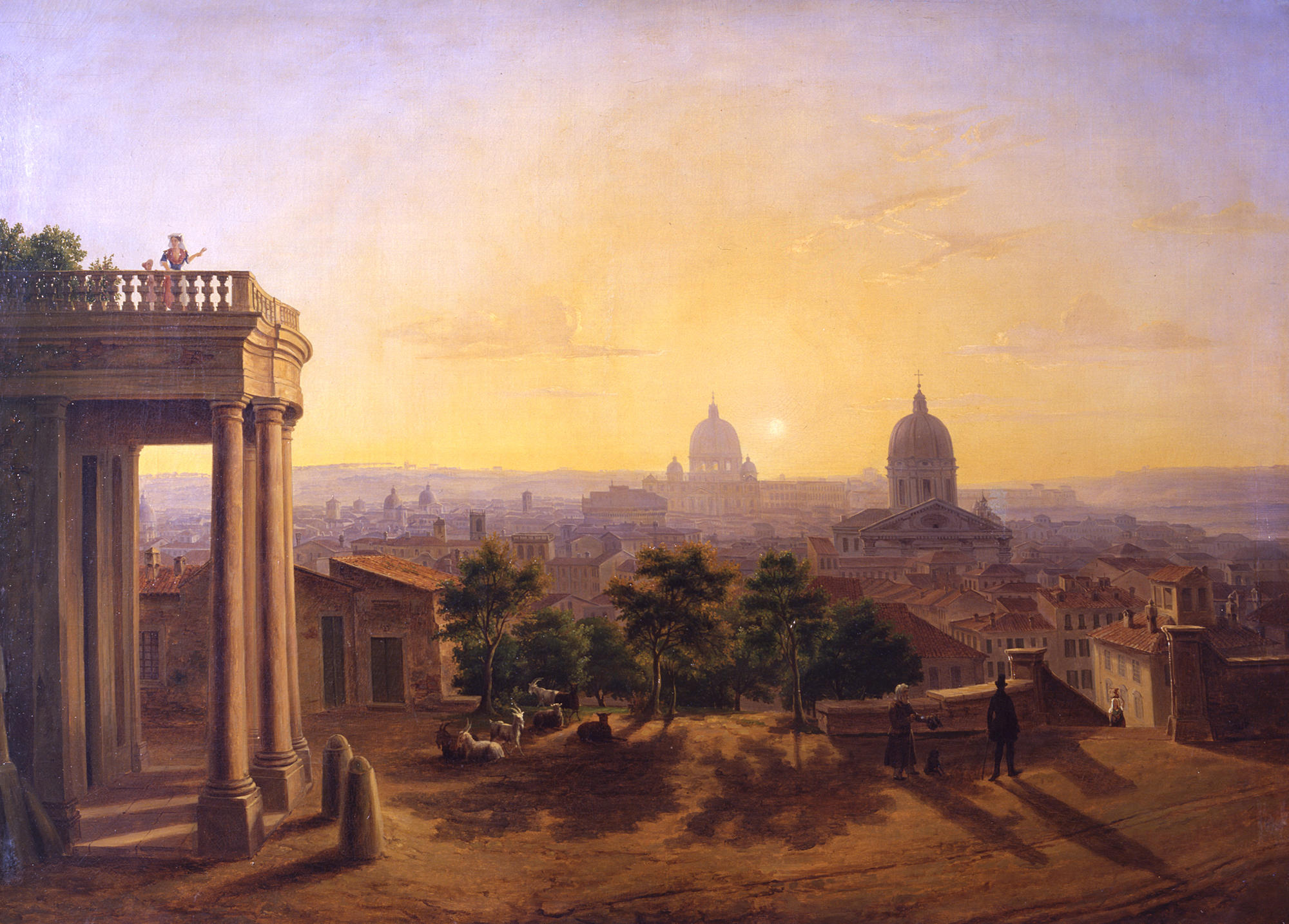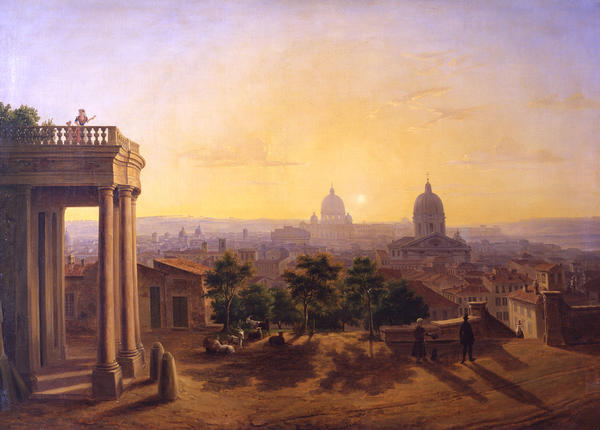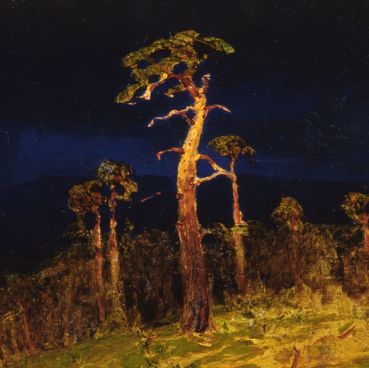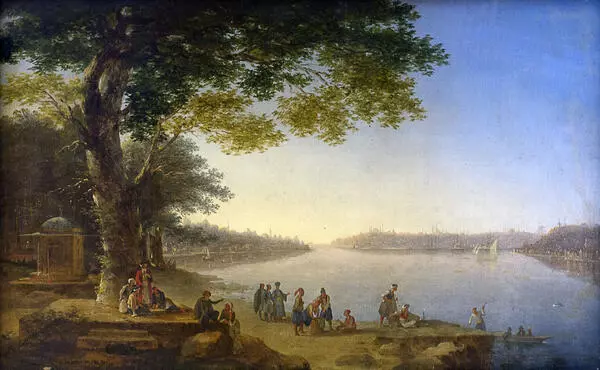The creative work of Maxim Nikiforovich Vorobiev was widely known to art lovers and connoisseurs of art of the 19th century. A talented teacher, who was in charge of the landscape class at the Academy of Arts for many years, he educated more than one generation of magnificent painters, with prominent marine painter Aivazovsky and future founder of the Radishchev Museum Bogolyubov among them.
Vorobiev’s mastery and talent attracted people of position to him. He was a special favourite of Emperor Nicholas I, who constantly gave him instructions and orders to create works of art. In order to fulfil such Imperial orders, the artist toured the countries of Europe and Asia. He managed to visit Germany, France, Turkey, Palestine and Greece. In 1845-1846 he toured Italy, visiting Rome, Naples and Sicily. Later, lots of studies and sketches made on tour laid down the basis for his completed pictures. One of such pictures made at the end of his life was the landscape “View of Rome”.
The canvas shows a broad panorama of the eternal city an hour before the sunset. The painter saw Rome unusually solemn and tranquil from Monte Pincio – the highest point of the Spanish Steps. From there the viewer overlooks city quarters and structures where the prominent dominating structures especially stand out — the dome of St. Peter’s Basilica on the horizon and the dome of the basilica Santi Ambrogio e Carlo. Recognizable are the silhouettes of Castel Sant’Angelo and two “twin” churches in Piazza del Popolo.
The artist portrayed Rome as his contemporary city as well as a great historical and cultural centre. The picture’s strong romantic opening combines with the classicistic principles of organising the composition and building up space. Skilled in the art of portraying the effects of light, the artist managed to show dormancy of the city before the onset of twilight. The artist often repeated his works but almost always made some changes in the interpretation of the same motif. A very similar picture Sunset in Rome is at present housed by the Tver Regional Picture Gallery.








